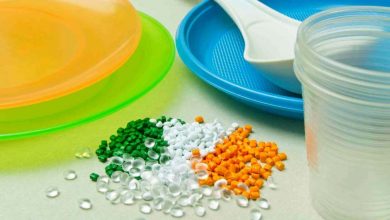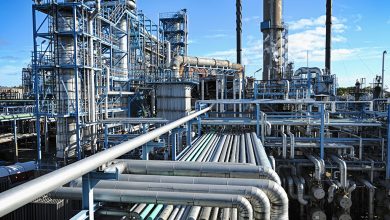- دانش قدرت است
- در آینده ممکن است
- طرفداران تیم های Hibs و Ross County در فینال
- نکته روز : آن مرد دوباره
- طرفداران تیم های Hibs و Ross County در فینال
- Spieth در خطر ناپدید شدن
Chemical fertilizers are divided into different types based on their ingredients (mainly nitrogen, phosphorus and potassium) and the purpose of adding them to the soil can be considered to compensate for the lack of elements needed for plant growth. Choosing the right chemical fertilizer requires knowing the characteristics and properties of the soil, this knowledge is usually done through sampling the desired soil and determining important parameters such as pH, amount of nitrogen, phosphorus, etc. Due to the widespread use of urea fertilizer among farmers, in the rest of the article, we intend to investigate the properties and characteristics of this fertilizer, its effects and its consumption in fruit trees, corn, rice and other agricultural products.
Properties and features:
As mentioned, nitrogen is the main ingredient of nitrogen fertilizers and is considered one of the main elements of plant growth. Urea fertilizer contains 46% of nitrogen and is known as a rich source of this element. Its appearance is white crystals and it is made of ammonia. and carbon dioxide is formed. These fertilizers have a high solubility (1079 grams per liter at 20 degrees Celsius). Therefore, in addition to the soil, they can also be absorbed through the plant foliage, of course, to increase the amount of nitrogen absorption, the method of injection into the soil is always recommended. In the following text, we will examine its production method.
Method of production:
As mentioned, urea is produced using ammonia and carbon dioxide under high pressure in two steps according to the following reactions.
2NH3 + CO2 ⇔ NH2COONH4 (ammonium carbamate)
NH2COONH4 ⇔ H2O + NH2CONH2 (urea)
The flow of urea exiting from the reaction contains CO2, NH3 and ammonium carbamate, which are decomposed into ammonia and carbon dioxide by heating, and the mentioned materials are recovered from the exit flow to be returned to the reaction to concentrate the produced urea. The general schematic of this You can see the process in the image below:

The important point in this process is the corrosiveness of ammonium carbamate, so it is necessary to use corrosion-resistant materials in the reaction environment in order not to impose additional costs.
Production of granular urea fertilizer
When urea fertilizer is placed in the soil, it turns into ammonium bicarbonate and emits in the form of gas, which will have little absorption if it is not well enclosed in the soil. They have the usual type, this has increased the amount of production of the granulated type of this product.

There are two ways to use this fertilizer, which include the following:
Foliar spraying:
In this method, urea is dissolved in water and sprayed on the foliage of plants. This method is used for plants that can absorb urea directly (potatoes, wheat, vegetables and soybeans).
Injection into the soil:
The second method involves applying urea to the soil, the process of breaking down urea into nitrate and ammonium is done by enzymes in the soil, which sometimes may take several weeks, however, studies show that ammonium and nitrate absorption by the plant is easier and It is done with a higher percentage.
Remember that the use of this fertilizer in high concentrations may cause poisoning and damage to the plant, so always do a soil test before use to get the best results.
Time to use urea fertilizer:
The time of use is generally determined according to the type of soil and the type of plant. For example, for cotton, it is added to the soil during cultivation, but in the case of vegetables, this should happen during the growing season, or for wheat, the best time to use it is during germination.
It can also be applied to corn, winter wheat, or any other small grain. The plant tends to turn into ammonia, which will reduce nitrogen uptake by the plant.
Advantages of using this fertilizer:
1- Production of high amounts of nitrogen for the plant and high efficiency compared to other earth fertilizers along with affordable cost.
2-Storage due to non-ignition and explosion
3- The possibility of using in the form of foliar spraying and injection into the soil
4- The possibility of combining with other fertilizers. For example, it can easily be used together with ammonia phosphate or diammonium phosphate, and its combination with super phosphates is not prohibited under the condition of quick use. And it makes it difficult to transport.
5- For cases where the soil is acidic, it is recommended to use this fertilizer.
What products is this fertilizer suitable for?

This fertilizer is very suitable for most agricultural products such as strawberries, blueberries, corn, wheat, citrus fruits and saffron, but the amount and method of use must be based on factors such as soil type, tree type, etc.
Disadvantages and side effects of using urea fertilizer:
Importantly, this material should not be stored with ammonium nitrate as these materials absorb water quickly when in contact.
Urea causes skin and eye irritation and respiratory complications. Continuous skin exposure causes swelling in the skin. Its high concentration in the blood causes damage to body organs. It should not be heated above the melting point because it will decompose and produce toxic fumes. This material is not normally flammable, but mixing it with strong oxidants such as nitrides can cause explosions.
Alternative to urea fertilizer
As it was said, this fertilizer is a rich and economical source of nitrogen element, therefore, the alternatives that are introduced for it should also be able to supply the nitrogen needed by the plant well. Ammonium nitrate, ammonium sulfate and potassium nitrate can be suitable alternatives for this popular fertilizer.



